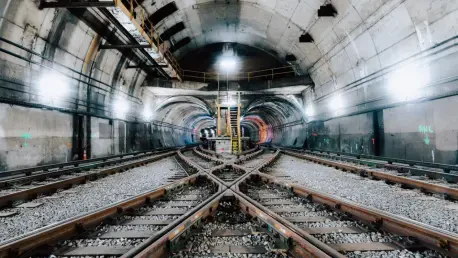The integration of modern technology into heritage railway systems is seeing new developments as Network Rail and its collaborators begin testing the European Train Control System (ETCS) on the A1 Class No. 60163 Tornado. This ambitious endeavor is part of Network Rail’s £9 million pathfinder project under the East Coast Digital Programme (ECDP), showcasing the possibility of operating historic steam locomotives in conjunction with contemporary railway networks. Carried out with partners Hitachi Rail UK, AtkinsRealis, and the A1 Steam Locomotive Trust, these tests on the Cambrian line in Mid Wales stand as a unique milestone. Since 2011, the Cambrian line has been running under ETCS, making it an ideal testing ground for this cutting-edge project.
Bridging Tradition with Technology
The primary goal of Network Rail’s current project is to ensure that heritage steam and diesel locomotives can continue to operate on modern railway networks without reliance on lineside signals. This evolution is crucial for the preservation and continuous operation of historical trains within today’s technologically advanced railway infrastructure. The Tornado, having been significantly modified to accommodate ETCS equipment, underwent changes such as an extended power supply infrastructure. This included a steam turbogenerator, an axle-driven alternator, and a dedicated battery bank, ensuring the locomotive is sufficiently equipped for the sophisticated ETCS technology.
This integration marks a world-first, with the Tornado being the pioneer steam locomotive to embrace this technology. The challenges faced include keeping the equipment clean in environments with coal dust and water and preserving the cab’s heritage aesthetics. Another vital consideration is customizing key functionalities like audible warnings and screen displays for the noisy and dynamic conditions inside a steam locomotive cab. Addressing these complexities requires close coordination between engineers and historians, ensuring that technological advancements do not compromise the heritage value of these celebrated machines.
The Impact of Successful Integration
The significance of successfully fitting the ETCS to a steam locomotive extends far beyond immediate technical milestones. The project aims to understand the technical feasibility and commercial viability of integrating ETCS in heritage locomotive fleets. Despite facing delays, primarily due to the Tornado’s comprehensive overhaul, the progress showcases the decreasing timeline required for ETCS installations. This accomplishment hints at broader adoption potential, unveiling new possibilities for both steam and diesel heritage locomotives. Initial driver feedback has been positive, noting the seamless integration of modern technology within traditional frameworks.
Understanding the technical feasibility and the positive implications of this project also sheds light on the future of heritage locomotives. The initial phases displayed how substantial modifications could be harmoniously integrated without diminishing the locomotive’s historic essence. Furthermore, the feedback from the locomotive drivers, who have experienced firsthand the introduction of ETCS into their operations, suggests that the juxtaposition between vintage machinery and modern technology is not only possible but beneficial. This progress hints at a promising future where tradition and innovation can coexist productively.
Future Phases and Broader Adoption
Moving forward, Network Rail plans to continue the ETCS testing on a Deltic diesel locomotive, refining systems based on findings from ongoing trials. This systematic approach helps establish a robust framework for ETCS’s eventual broad-scale adoption in heritage railway operations. The understanding gained from adapting ETCS technology to accommodate the specifics of a steam locomotive is invaluable. It provides insights into reducing costs and simplifying future implementations. Network Rail has indicated that costs for subsequent installations are expected to decrease significantly as the technology progresses and lessons from these tests are integrated into future projects.
While specific timelines for reviewing the current tests have not been set, the outcomes will be instrumental for developing operational standards for heritage locomotives. This phased approach in testing ETCS on diverse locomotive types ensures a comprehensive evaluation, enabling continuous improvement. Network Rail’s emphasis on this project underscores the focused effort to marry historical heritage with cutting-edge railway safety systems, ensuring the enduring operation of these classic machines.
Balancing Innovation and Tradition
The integration of modern technology into traditional railway systems is taking a significant step forward as Network Rail and its collaborators commence testing the European Train Control System (ETCS) on the A1 Class No. 60163 Tornado. This pioneering effort is part of Network Rail’s £9 million pathfinder project under the East Coast Digital Programme (ECDP). The initiative aims to demonstrate the feasibility of operating vintage steam locomotives alongside modern rail networks. The tests are conducted with partners Hitachi Rail UK, AtkinsRealis, and the A1 Steam Locomotive Trust on the Cambrian line in Mid Wales, which has been running under ETCS since 2011. This historical project represents a unique milestone, merging the charm of historical locomotives with contemporary technology. The Cambrian line, with its established ETCS infrastructure, proves to be the perfect testing ground to assess how well heritage trains can adapt to and operate within modern digital rail systems.









